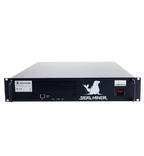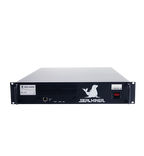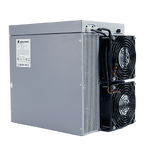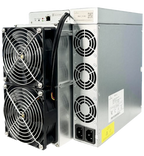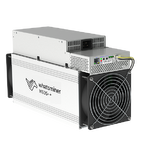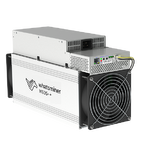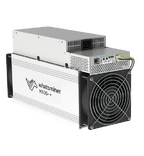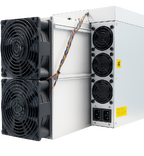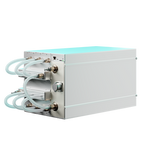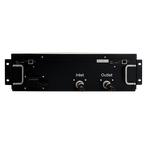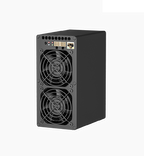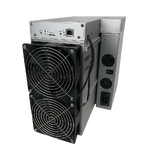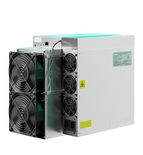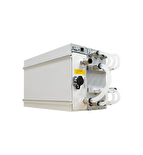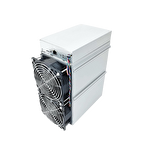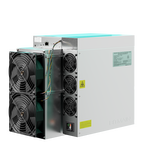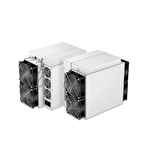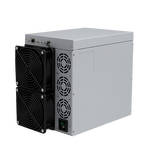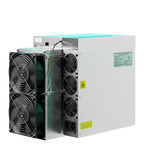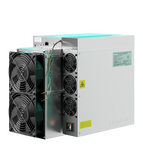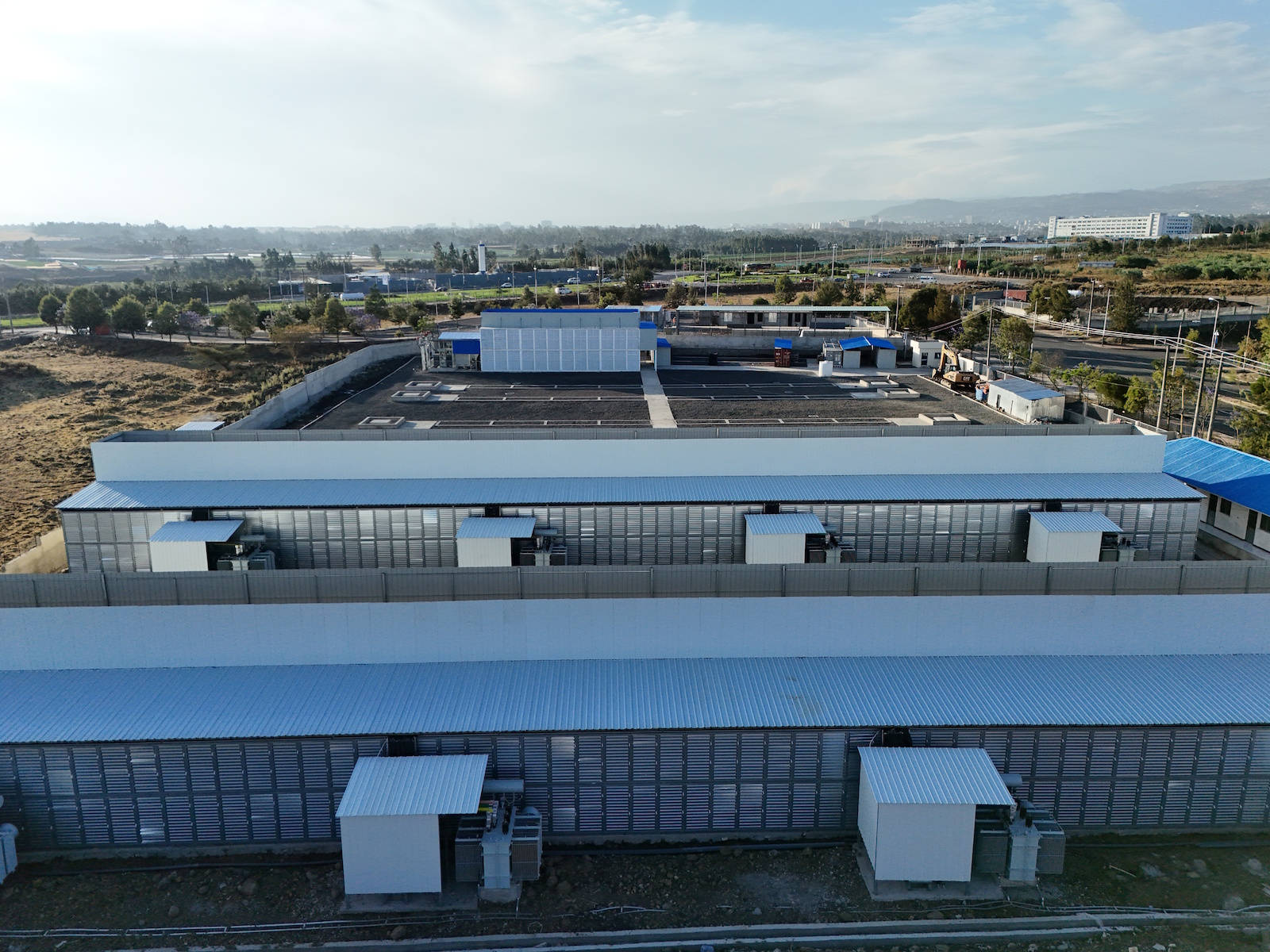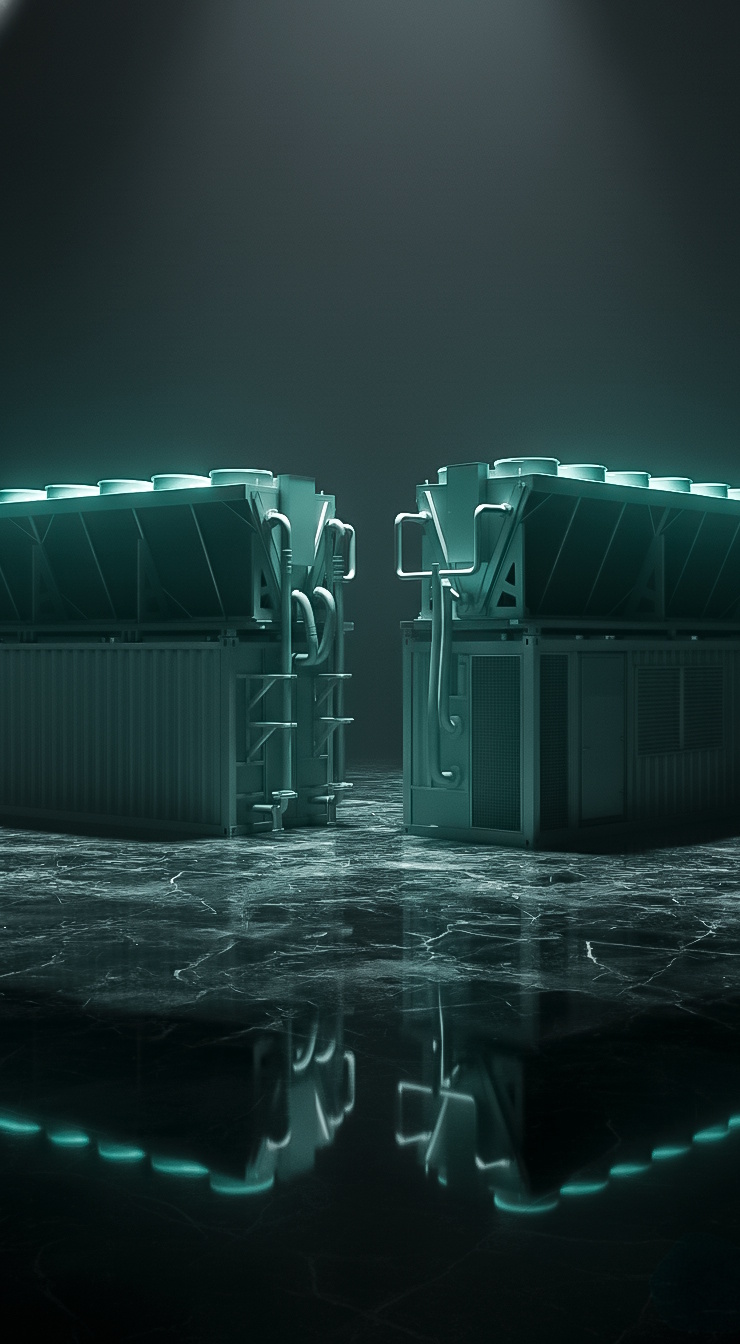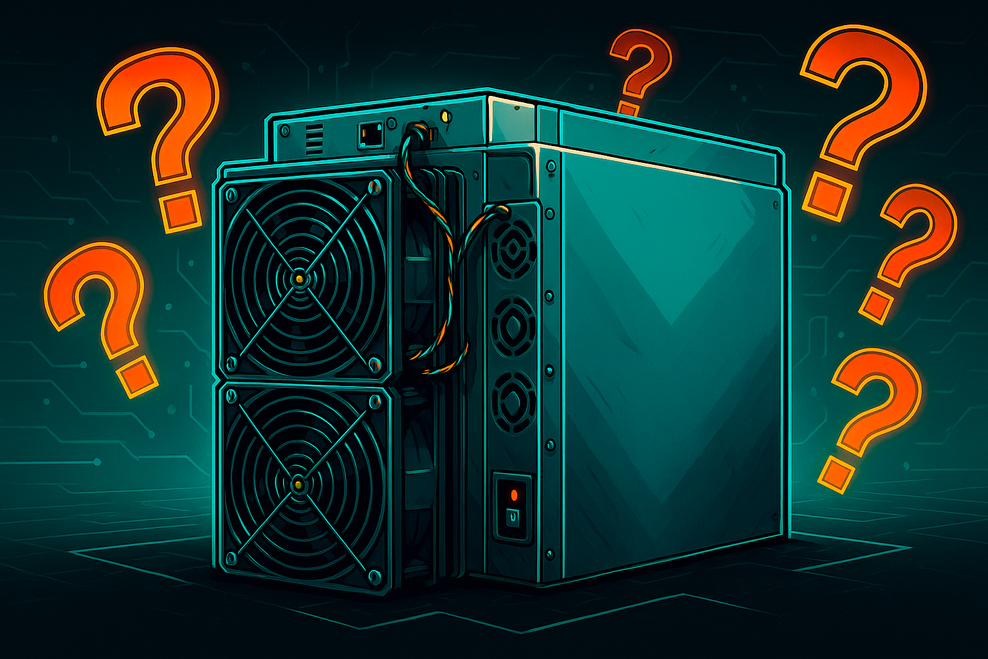
Key Takeaway
ASIC mining represents the most efficient and scalable method of participating in Proof-of-Work blockchains like Bitcoin, Litecoin, and Kaspa. Unlike general-purpose GPUs or CPUs, Application-Specific Integrated Circuits (ASICs) are purpose-built to execute a single cryptographic algorithm with extreme speed and energy efficiency. This design allows them to outperform all other mining hardware in terms of hash rate, power consumption, and long-term ROI.
Modern ASIC devices achieve performance levels that are unattainable for traditional rigs, producing hundreds of terahashes per second while maintaining sub-20 joule-per-terahash energy profiles. These machines are the foundation of professional mining operations, enabling industrial-scale deployments and precise control over operating costs.
However, the same specialization that makes ASICs so powerful also introduces trade-offs: high initial investment, lack of algorithm flexibility, and rapid hardware obsolescence. For serious miners who can access low electricity prices or benefit from hosting infrastructure, ASICs remain the most viable solution for maintaining competitive hash power in 2025 and beyond.
1. Introduction
Over the last decade, crypto mining has transitioned from being a niche hobby into an industry with billion-dollar revenues and global infrastructure. At the core of this transformation are ASIC miners — machines optimized to do one thing extremely well: compute hashes and secure decentralized blockchains like Bitcoin.
Unlike CPUs or GPUs, ASICs are Application-Specific Integrated Circuits, designed from the ground up for a single algorithm. Their rise changed the mining landscape by offering better profitability, lower energy waste, and greater stability for networks depending on Proof-of-Work.
2. What Is ASIC Mining?
ASIC mining refers to the use of hardware that integrates a chip designed exclusively for mining a specific algorithm — like SHA-256 for Bitcoin.
These chips outperform all general-purpose processors because they focus only on one cryptographic function. For Bitcoin, this means solving SHA-256 puzzles quickly enough to secure a block and earn rewards. This specialization is what gives an ASIC Bitcoin miner its massive edge in hash rate and efficiency.
ASICs are not reprogrammable, not multi-functional, and cannot be used for anything outside the algorithm they were designed for. But they do their job with precision and speed that no GPU can match.
3. History and Evolution of ASIC Mining
The rise of ASIC mining began around 2013, when the first Bitcoin-specific ASICs hit the market. Early models like the Butterfly Labs Jalapeno offered around 5 GH/s, which was revolutionary compared to the few hundred MH/s from GPUs at the time.
From there, the arms race began. Manufacturers like Bitmain and Canaan started releasing increasingly powerful chips. Each generation improved efficiency, lowered joules per terahash, and pushed the network hashrate to new heights. This rapid innovation has also led to frequent hardware obsolescence.
4. How ASIC Miners Work
The mining process using ASICs looks like this:
- The device connects to a mining pool or directly to the blockchain.
- It continuously generates hashes — digital fingerprints of input data, using the assigned algorithm.
- When a hash below the network’s difficulty target is found, it’s submitted.
- If valid, the miner receives a reward in the form of coins and fees.
An ASIC miner works 24/7. Its hardware is optimized for power-to-performance ratio, with custom cooling systems and firmware that maximize uptime and throughput.
Many setups use ASIC miner hosting services to colocate these devices in professional facilities with access to cheap electricity and industrial-grade ventilation.
5. Advantages of ASIC Mining
Efficiency
One of the primary reasons ASIC miners dominate the crypto landscape is their unmatched efficiency. While modern GPUs may consume between 100–300 W to generate a few hundred MH/s (depending on the algorithm), ASICs are engineered for optimal power-to-performance ratios.
For example, the Antminer S21 achieves 200 TH/s at just 17.5 joules per terahash. That’s nearly 5–10x more efficient than GPU equivalents on SHA-256. Efficiency here doesn’t just reduce operational cost, it also determines whether mining remains viable in electricity markets where rates exceed $0.08/kWh.
Moreover, ASIC architecture allows for advanced cooling designs, such as immersion cooling and watercooled chassis, which not only maintain consistent thermal performance but also reduce energy loss due to overheating. Energy-efficient miners are especially critical in regulatory environments where sustainability standards are tightening.
Higher Profitability
While ASICs require a larger upfront investment, they provide significantly better ROI over time due to both higher hash rates and reduced power costs. In Proof-of-Work mining, profitability depends on block rewards, transaction fees, electricity rates, and hash difficulty. ASICs outperform in all but electricity variability.
Tools like the ASIC miner profitability calculator help quantify expected returns. For instance, at $0.07/kWh, a Whatsminer M66 can deliver net daily profits exceeding $10 under favorable Bitcoin prices.
Additionally, ASICs tend to hold profitability longer during market downturns compared to GPU rigs, which are quickly priced out by rising difficulty or reduced block rewards. In bear markets, ASIC users are often the last to shut down.
Lastly, ASICs allow you to scale horizontally. Adding new units to a farm doesn’t require software tweaks or driver conflicts. Just plug in, configure IP, and join your pool.
Low Maintenance
One underrated advantage of ASIC mining is its operational simplicity. While GPU rigs often require BIOS tuning, thermal paste replacements, and overclocking firmware, ASICs come with pre-calibrated firmware optimized for stability and uptime.
Their onboard controllers provide remote monitoring, allowing operators to adjust fan speeds, check temperature thresholds, or auto-reboot offline units. Many manufacturers also offer OTA firmware updates and diagnostic tools for detecting failed hashboards.
In properly ventilated environments, high-end ASICs can run 24/7 for months without intervention. This is especially valuable for farms managing hundreds of units. Less time spent on maintenance directly translates into fewer technical personnel needed, reducing labor costs.
Space Optimization
With ASICs, you can achieve maximum hash rate density per square meter. Industrial farms often install 50–100 ASICs per rack, each drawing 3–5 kW and delivering hundreds of TH/s. The same hash rate from GPUs would require 4–5x more space, more networking, and more PSU complexity.
Compact form factors and vertical airflow designs in miners like the Antminer S19 series make them ideal for high-density deployments. Immersion-ready form factors further reduce the space needed for fans and airflow, enabling vertical stacking in fluid tanks.
This spatial efficiency lowers warehouse rental costs and simplifies infrastructure (less cabling, fewer switch ports, centralized cooling).
Strong Secondary Market
Even after they’ve dropped out of profitability in high-cost regions, ASIC miners are actively traded on secondary markets, particularly in regions with cheap hydro or surplus electricity (e.g. Venezuela, Ethiopia, Siberia).
Platforms like Kaboomracks, eBay, and Telegram groups facilitate used ASIC sales. Prices drop by 30–70% after 18–24 months, giving budget miners access to high-performance machines at low entry costs.
Some miners specialize in refurbishing old ASICs, replacing hashboards or fans to extend operational life. For sellers, this creates a depreciation offset strategy, turning CapEx into liquidable assets after ROI is reached.
6. Disadvantages of ASIC Mining
High Initial Cost
The most significant barrier to entry in ASIC mining is capital expenditure. Top-tier units cost between $3,000 and $6,000, depending on demand, shipping, and chip availability.
Prices also fluctuate based on Bitcoin market trends — when BTC surges, ASIC prices spike by 50–100% due to increased demand. Add to that import duties, VAT, and potential customs delays, and the total investment can rise sharply.
In many jurisdictions, miners must also budget for electrical upgrades, panel installations, and ventilation systems, which may cost thousands more. Without a well-capitalized setup plan, ROI can be pushed back by 12–18 months.
Rapid Obsolescence
ASIC mining is a hardware arms race. Each new generation offers better efficiency and hash rate, rendering previous models uneconomical within 2–3 years, especially in markets with electricity costs above $0.08/kWh.
For instance, the Antminer S9, once dominant, is now nearly obsolete due to poor J/TH performance. Even S19 models are now nearing end-of-life in competitive regions.
This pace of obsolescence means miners must either continuously reinvest or relocate outdated hardware to cheaper regions. Without hardware upgrade cycles, profitability can collapse when difficulty rises or halving events reduce rewards.
Environmental Concerns
A large-scale ASIC operation can consume megawatts of electricity per day. In regions reliant on fossil fuels, this raises carbon emissions and local grid load, sometimes resulting in blackouts or utility price hikes.
Public backlash in regions like New York state has led to mining bans or moratoriums due to environmental pressures. In China, mining crackdowns were partially fueled by emissions targets ahead of the country’s net-zero pledges.
Mining firms now increasingly turn to hydropower, solar, and flared-gas energy to reduce environmental impact. While this shift is promising, it requires infrastructure and planning, making it inaccessible to most small-scale operators.
Algorithm Lock-In
Each ASIC miner is built to run one hashing algorithm. This means a SHA-256 ASIC can mine Bitcoin and Bitcoin Cash, but not Ethereum Classic or Litecoin. Switching to another coin usually means buying an entirely different device.
This inflexibility makes hedging risk difficult. When network difficulty spikes or a coin’s price falls, GPU miners can pivot to other algorithms and ASIC miners cannot.
Moreover, algorithm changes (as with Ethereum’s move to Proof-of-Stake) can completely brick ASIC devices, turning them into useless metal if the coin they’re tied to drops support.
Limited Use Case
Unlike GPUs, which can be used for rendering, AI workloads, or gaming, ASICs have zero utility outside mining. Their firmware, architecture, and interfaces are tightly bound to the mining task.
Once unprofitable, an ASIC miner becomes essentially e-waste. While some components like PSUs or fans can be salvaged, the core chip has no resale value outside the crypto sector.
This raises concerns around electronic waste management, especially in countries without proper recycling infrastructure. Some large farms have begun experimenting with recycling hashboards or turning off older ASICs during peak grid demand to reduce load, but these are stopgap measures at best.
7. ASIC vs. GPU Mining
| Feature | ASIC Mining | GPU Mining |
|---|---|---|
| Hash rate | Extremely high | Moderate |
| Energy use | Efficient (lower per hash) | Less efficient |
| Flexibility | Algorithm-specific only | Supports many coins |
| Initial cost | Higher | Lower |
| Resale value | Shorter-term resale market | Can be repurposed (e.g. gaming) |
| Lifespan | 2–3 years average | 3–5 years with upgrades |
8. Best Coins to Mine with ASICs
ASIC mining is mainly used for coins that are mature and widely adopted. Here are some of the top examples:
- Bitcoin (BTC) – SHA-256
- Litecoin (LTC) – Scrypt
- Dogecoin (DOGE) – merged mined with Litecoin
- Kaspa (KAS) – kHeavyHash (recent ASIC support)
- Bitcoin Cash (BCH) – SHA-256
- Dash (DASH) – X11 algorithm
Each of these networks benefits from ASICs by gaining higher security and network stability.
9. Top ASIC Miners in 2025
| Model | Algorithm | Hashrate | Efficiency | Notable Feature |
|---|---|---|---|---|
| Antminer S21 Hydro | SHA-256 | 335 TH/s | 16 J/TH | Watercooled |
| Whatsminer M66 | SHA-256 | 270 TH/s | 18 J/TH | Industrial design |
| iBeLink BM-K3 | kHeavyHash | 70 TH/s | N/A | First Kaspa ASIC |
| Jasminer X16-Q | Ethash | 1.95 GH/s | High density Home use compatible | |
| Goldshell Mini-DOGE II | Scrypt | 420 MH/s | Low power Compact Dogecoin miner |
Some of these can be found via ASIC distributors or secondary markets.
10. ASIC Miner Hosting & Infrastructure
As running large numbers of ASICs at home is impractical, many miners turn to ASIC miner hosting services. These facilities provide high-speed networking, cooling systems (including immersion), physical and digital security, bulk electricity discounts and maintenance support.
11. Legal and Environmental Considerations
ASIC mining has been banned or restricted in countries like China and parts of Kazakhstan due to energy overloads and illegal setups.
In contrast, North American facilities often operate under energy contracts that rely on hydro, wind, or solar. Some firms use watercooled ASIC miner racks to reduce environmental noise and thermal output.
12. Conclusion
ASIC mining is now a requirement for competing on the Bitcoin network and similar blockchains. Despite high costs and limited flexibility, the return on investment for ASICs remains strong when paired with low-cost hosting and professional maintenance.
Whether you're operating a warehouse of machines or colocating a few units, understanding the economics and lifecycle of ASIC hardware is crucial. ASIC miners remain the heart of crypto’s Proof-of-Work era. And they aren’t going away any time soon.
13. FAQ
What is an ASIC miner?
An ASIC miner is a hardware device that uses an Application-Specific Integrated Circuit to execute a single cryptographic algorithm, typically for Proof-of-Work blockchains. Unlike GPUs, which can handle various workloads, ASICs are optimized for speed and efficiency in solving a specific hashing function such as SHA-256 (Bitcoin), Scrypt (Litecoin), or kHeavyHash (Kaspa). Their performance is measured in terahashes per second (TH/s), and their efficiency in joules per terahash (J/TH). These machines are designed from the chip level to the firmware for continuous, 24/7 mining operations.
How much do ASIC miners make?
The profitability of an ASIC miner depends on multiple variables:
- Electricity cost (most critical)
- Hashrate and efficiency of the miner
- Current network difficulty
- Block reward and transaction fees
- Market price of the mined coin
For example, with an electricity rate of $0.10/kWh, an Antminer S21 (200 TH/s, 17.5 J/TH) can net approximately $6.60 per day, assuming network difficulty remains stable and Bitcoin trades at $100,000. At a lower electricity rate of $0.06/kWh, daily profitability can reach around $9.96. These figures fluctuate with market conditions, so it's important to use a real-time ASIC miner profitability calculator to get accurate and up-to-date estimates.
How long does it take to mine 1 Bitcoin with an ASIC?
Solo mining 1 BTC is statistically improbable, even with top-tier hardware. At today’s difficulty levels, solo mining with a 200–300 TH/s device could take decades without earning a single block. That’s why most miners join mining pools. In a pool, rewards are distributed proportionally to contributed hashpower. In this case, a device like the Whats

